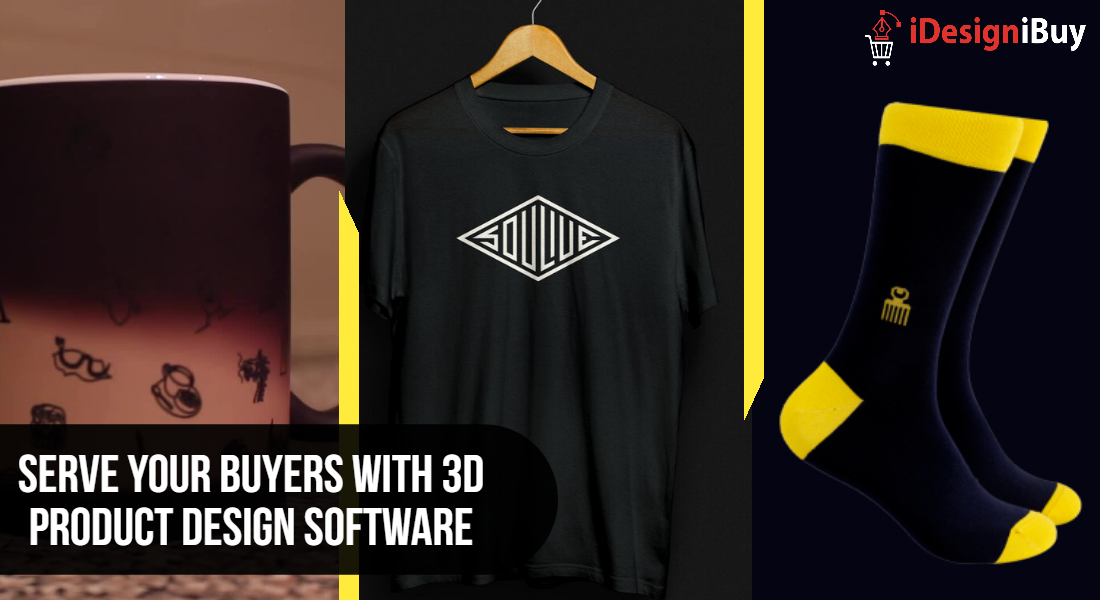The customized product category holds a unique position amid coronavirus, primarily because they rely on the direct-to-consumer channel. Customized products, including t-shirts, caps, mugs, and many others, have benefited in the current landscape and are seeing an increase in the adoption and sales of these products. The product designer software offers modern-day solutions to brands that are willing to prosper in the market, using customization to cater to people’s demands.

3D Product Design Software Enables Smaller Fashion Houses to Survive During Up-wind
The fashion brands operating in the customization domains of caps, footwear, and t-shirts bypassed the fallout from retail store closures, and with more people than ever before dependent on e-commerce, customers are willing to try out a new brand proposition that offers personalized products. This phenomenon brings us to an interesting question of why customization is still rising in the retail sector, and the answer is simple. When implemented correctly, personalization offers an appealing, cost-effective way for consumers to form an emotional connection to a particular product or brand. At the same time, retailers enjoy increased loyalty and customer satisfaction rates.
Here are some of the factors that are driving the rise of customization:
- Willing to Pay Premium
The rise of personalized products is a natural evolution in today’s ‘instant gratification’ economy where consumers have grown accustomed to having access to on-demand, customized services. Since we all are living in a fast-paced life, this is the basic reason that consumers are willing to pay higher prices because they now detest waiting for a product to launch and then buy it. According to a report published by Deloitte, 1 in 4 consumers are willing to pay more to receive a personalized product or service, and, in some categories, more than 50 percent of consumers expressed interest in purchasing customized products or services.
- Increasing Customer Service
As mentioned above, the product customization remained unmoved by the outbreak of COVID-19 because of its DTC policy. It’s because of this reason; consumers expect a higher degree of customer service at a small retailer. They believe that smaller retail shops have more space for customers to come in seeking a different kind of experience than what can be found in chain stores and outlets. It’s common knowledge that while small retailers often can’t compete over price, they can deliver value through customer service and making highly personalized products. And as discussed above, price is no longer the main point of contention for a vast number of savvy consumers.
The 3D design online works on similar lines and enables your buyers to customize their ornaments, bags, apparel, footwear, and any useful items. As the name suggests, the tool is designed with a 360-degree preview that helps buyers to look at the final version of their customized product before placing the order.
- Rising Social Network
We are in the era of social media, and it is the most crucial platform to build your story and connect with the audience. Social networks allow consumers to share, rate instantly, and comment on their purchases, further cementing the connection between the person and the product. Customers who are happy with their purchase readily share photos of their personalized products online, helping to transform shoppers into brand advocates.
Apart from sharing success stories, social networking offers a platform where fashion brands can notify customers about their next product. These days, consumers are now able to achieve varying levels of control over the personalization of the products they purchase, and without paying a massive mark-up for fully custom products.
- Growing Demand of Personalization Among Millennials
Millennials are born in the period in which the technology is continuously growing and making individuals smarter. Over the last couple of years, the fashion brands across various domains have been able to offer more personalized products meant to fit a user’s specific lifestyle and goals. Even Travis Nagle, co-founder of Stem and Viesso, seconds this notion, and further quotes, “there has been a slow but powerful shift back toward valuing personalization of consumer goods, partly enabled by the ever-evolving interface of e-commerce.“
The fashion tech is booming and compelling Millennials, in particular, to move towards customization when shopping.
- Wide Range of Products
Earlier, product customization was limited to small retailers. But as time changed and the onset of technology changed the dynamics on which the fashion houses used to provide customization options. These days, buyers can opt for digital printing, custom embroidering onto textiles, minor alterations to clothing, engraving, and perhaps swapping out a few interchangeable parts between items. Technologies that allowed retailers to track and manage personalization which was earlier out of reach for most small business owners.
Conclusion-
Towards the end, all we have to say is the product customization is a trend that will remain in the fashion market as long as customers are there to choose it. Therefore, manufacturers and retailers need to invest in the latest technology for both personal benefits and to cater to buyer’s needs. The product design software by iDesigniBuy facilitates the designing and manufacturing of customized products and for the execution of personalized marketing campaigns. The tool enables small businesses to gain a better understanding of what consumers want.
If you to want to explore the personalization option,
